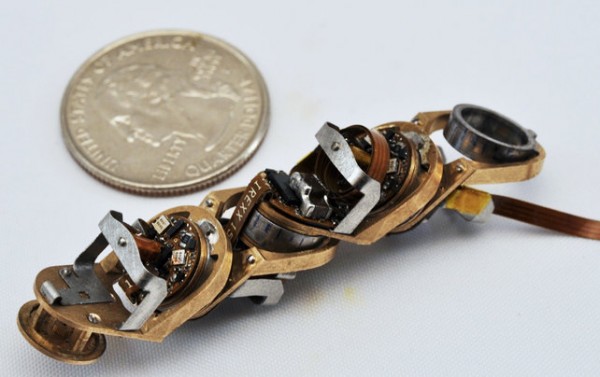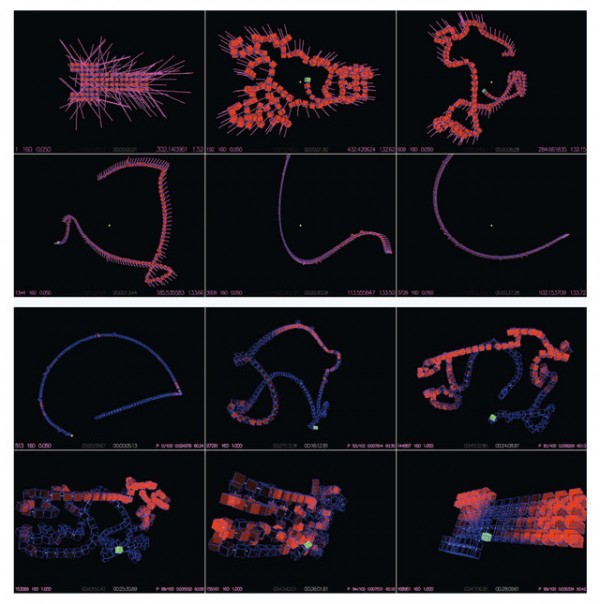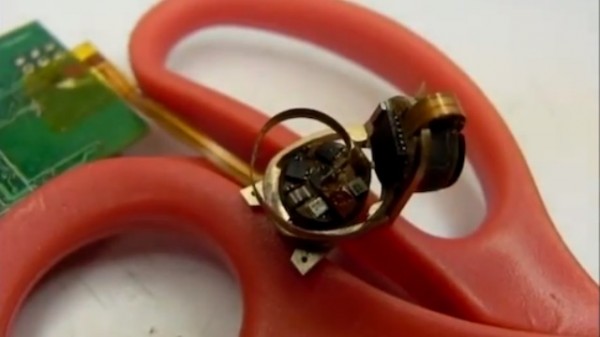What would you do if you could press a button on a keyboard and instantly create whatever material you wanted, from a pencil to a Buick to a custom-molded floor tile? It sounds like science fiction—and it still is—but scientists at MIT have come a little bit closer to making this magic a reality through a new form of micro-robotics that mimics the properties of biological proteins.
With funding from the Defense Advanced Research Projects Agency (DARPA), a research team from MIT’s wonderfully named Center for Bits and Atoms has created a chain of tiny robots, each less than a centimeter in diameter, that can twist themselves into a variety of pre-programmed shapes and hold their position. Once reduced to the nanoscale, this concept, called the Milli-Motein, could someday revolutionize the way we build and shape matter, including energy-efficient building materials.

In its current crude form, the prototype Milli-Motein is extremely limited, says the project leader, Neil Gershenfeld, head of the Center for Bits and Atoms. The chain of robotic motors, just a few centimeters long, looks like nothing more than a spare part from a “Transformers” sequel. Each joint can be programmed to bend each joint left or right and up and down to form hundreds of desired shapes, which can be held in position indefinitely via electromagnetism.
The key breakthrough, Gershenfeld said, is that the technology is scalable. So when the scientists figure out how to shrink the units to the size of molecules, they can be arranged in incredibly long strings that can be programmed to bend and fold via a minute electric charge into a nearly infinite variety of shapes, much the way a protein works in the human body to build strands of DNA and other nanostructures. The scientists have called this “programmable matter” or “physical software” for its potential to be turned into any kind of object, no matter how complex, the same way the countless 1’s and 0’s of binary code can be arranged to operate an iPad.

Ara Knaian, a Ph.D. who is working on the MIT, was quoted in TechNewsWorld comparing this nano-bot research to “the early days of computers, where much of the research is so general that the common thinking is that there must be things that this is useful for. Part of the research that we’re now involved with is to find that killer application for this.”

Eventually, the team said, these Milli-Moteins could be used to create hyper-efficient building materials that are lighter and stronger than the steel, concrete, glass, plastic and wood we use today. Because they are fully programmable, the materials could be custom-made on demand in the exact specified shape and quantity, which would require a small fraction of the energy expended to build structures from raw materials.
“This could include shape-changing material that can form needed objects,” Knaian said, “thus reducing our environmental impact by reducing the need for mining, manufacturing, transportation and even waste disposal.”